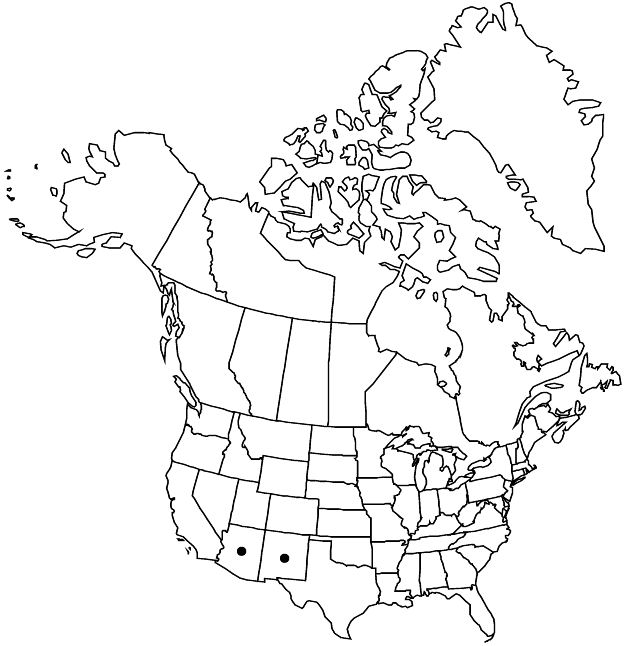Arceuthobium gillii
Brittonia 16: 55, figs. 1A, 2A. 1964.
Plants forming nonsystemic witches' brooms; staminate and pistillate plants dimorphic: staminate taller with open divaricate branching, pistillate shorter with dense branching. Stems olive green, greenish brown, greenish yellow, or orange; secondary branching fanlike, branches 8–15(–25) cm, third internode 5–18 × 2–4.5 mm, dominant shoot 2.5–8 mm diam. at base. Staminate pedicels absent. Staminate flowers slightly asymmetric, (proximal petal deflexed at anthesis), lenticular in bud, 2.5–4 mm diam.; petals 3, same color as stem abaxially, tawny reddish brown adaxially. Berries proximally olive green and conspicuously glaucous with bluish hue, distally greenish or yellowish brown, 4–5 × 2–3 mm. Seeds pyriform to ellipsoid, 3–4 × 2–3 mm, endosperm dark olive green. 2n = 28.
Phenology: Flowering Feb–Apr; fruiting Oct.
Habitat: Coniferous and mixed forests with Chihuahua pine.
Elevation: 1700–2700 m.
Distribution

Ariz., N.Mex., Mexico (Chihuahua, Durango, Sinaloa, Sonora).
Discussion
Meiosis occurs in September, with fruits maturing 19 to 20 months after pollination; seeds germinate in April.
In the flora area, Arceuthobium gillii is found in the Chiricahua, Huachuca, Santa Catalina, and Santa Rita mountains of Arizona, and the Animas Mountains of New Mexico. Subspecies nigrum Hawksworth & Wiens, which occurs in the Sierra Madre Occidental and Oriental of Mexico, was subsequently elevated to species rank as A. nigrum (Hawksworth & Wiens) Hawksworth & Wiens. The two species are apparently allopatric but occur in the same mountain range in northern Durango, Mexico. Both form nonsystemic witches’ brooms on members of Pinus subsect. Leiophylla Loudon and are closely related as shown by molecular analyses (D. L. Nickrent et al. 2004).
Selected References
None.